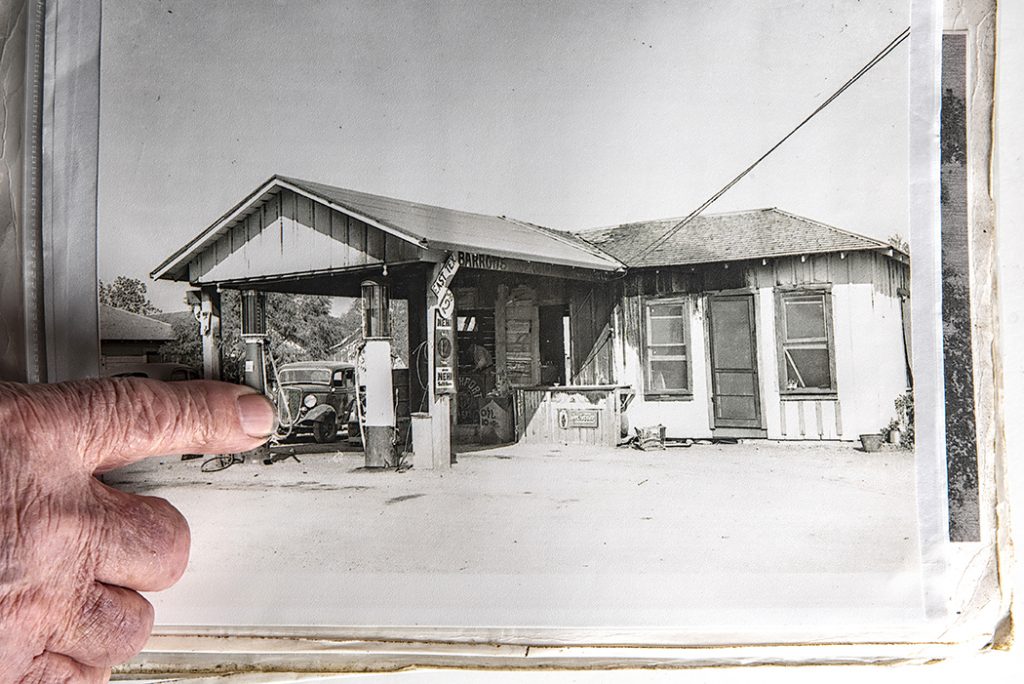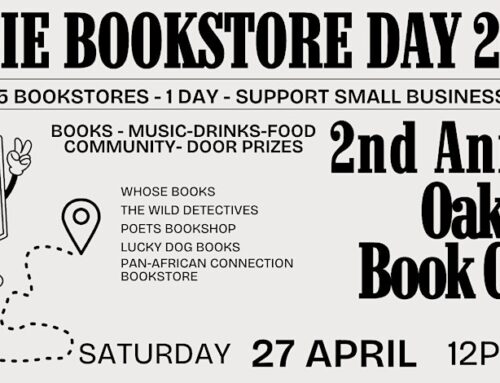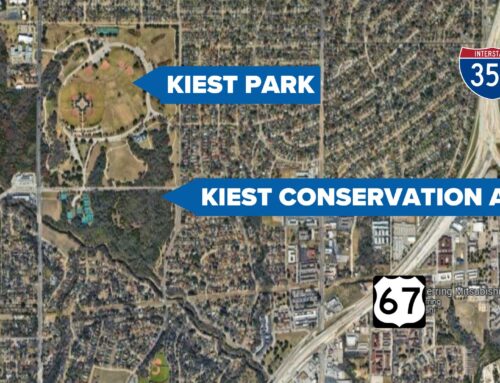
Buddy Barrow points to a photo of the Barrow family filling station on Singleton Boulevard in this 2019 file photo by Danny Fulgencio
When the dumping ground of Dallas becomes a sweet real estate deal in Dallas, things change.
Dallas West Shopping Center is Trinity West now.
Some of the hooker motels were demolished where there are apartments and restaurants now.
There’s a 7-Eleven on the former Superfund site at Westmoreland Road, where the federal government had to come in and decontaminate the poisoned earth, now.
Amid all that, at 1221 Singleton Blvd., sits the childhood home of Clyde Barrow, cold-blooded killer, worldwide folk figure, cultural phenomenon, and some would say, West Dallas trash.
The building is where Barrow’s parents, Henry and Cumie Barrow, lived and ran their business, Star Service Station, until the 1940s.
The place was firebombed twice after the death of Bonnie and Clyde. Clyde’s mother, then 65, was hit in the face and lost an eye when former Barrow gang member Baldy Whatley fired a shotgun on the station in 1938.
Thirty days after developer Brent Jackson’s company, Oaxaca Interests, bought the old Barrow filling station in January, the city’s Landmark Commission served him with notice of a hearing to initiate historic landmark designation on the property.
“My company, Oaxaca Interests, cares about this community,” Jackson said in the hearing Monday. “I listen to the community. I respect cultural richness.”
Jackson, who lives in Oak Cliff, developed Sylvan Thirty. Built in 2015, it was one of the first among the first wave of new developments in West Dallas.
He and his wife volunteer at neighborhood schools and the Boys and Girls Club in West Dallas, among many other contributions, he said.
He wants to demolish the building, although he says he’s willing to put up some money toward moving it. But he wants nothing to do with Bonnie and Clyde.
Consider all the gun violence in Dallas to this day, he said.
“Facts are still facts,” Jackson said. “He did murder a number of first responders and good upstanding citizens.”
The Lillie McBride House a couple of blocks away, where Barrow killed Tarrant County Deputy Sheriff Malcolm Davis in 1933, is also up for Landmark initiation. That hearing is set for April 6.
“West Dallas was the last place anybody wanted to live in,” said Elsa Cadena, who was born and raised in the neighborhood. “When I was growing up, it was embarrassing to tell anybody you lived in West Dallas because it was associated with being poor.”
It was the dumping ground of Dallas, she said, where the air, water and land were polluted for a century.
“It’s where the poorest of the poor lived,” she said. “The forgotten, the disadvantaged, the immigrants, and yes, the criminals.”
Cadena was one of several West Dallas natives who said the history and culture of their neighborhood is being wiped out.
Picture the three-story condos, the white guys riding e-scooters in dress pants, the valet parking, the retro barber shop, all in the former dumping ground of Dallas.
“We’re so proud because everybody wants to be in West Dallas now, when in past days, we couldn’t even get police officers to come out,” said neighbor Mary Lou Parras.
One Dallas resident argued that Bonnie and Clyde “came out of a context that’s informative” of the 1930s, the Dustbowl and the Depression, and their story is a worthy study “even though they went off the deep end.” They were bank robbers at a time when the general public distrusted financial institutions.
For whatever reason, they captured the fascination of Americans and people around the world so much that “Bonnie and Clyde” remain recognized names the world over.
Besides that, the building contributes to Dallas’ heritage tourism, said David Preziosi of Preservation Dallas. Our main attraction is also the site of a murder, Dealey Plaza, but the Bonnie and Clyde tour is one of the Dallas Historical Society’s most popular tours, he said. Most other sites related to Bonnie and Clyde in Dallas are gone already.
“If you don’t have the sites, you can’t go and see the sites,” Preziosi said.
Isaac Martinez of Winnetka Heights showed up to testify because, “glorifying anything like this, to me, it’s gross.”
He compared it to Confederate monuments, which he says “represent something terrible” and have no place in the city.
“I don’t see children or school tours going there,” he said.
The Landmark Commission voted in favor of initiation, which means a volunteer committee will study the building to decide whether it is worthy to be considered for landmark designation based on questions of history, heritage and culture as well as whether enough of the original building is intact. Only commissioner Katie Slade voted against it, offering an argument for the property owner’s rights.





